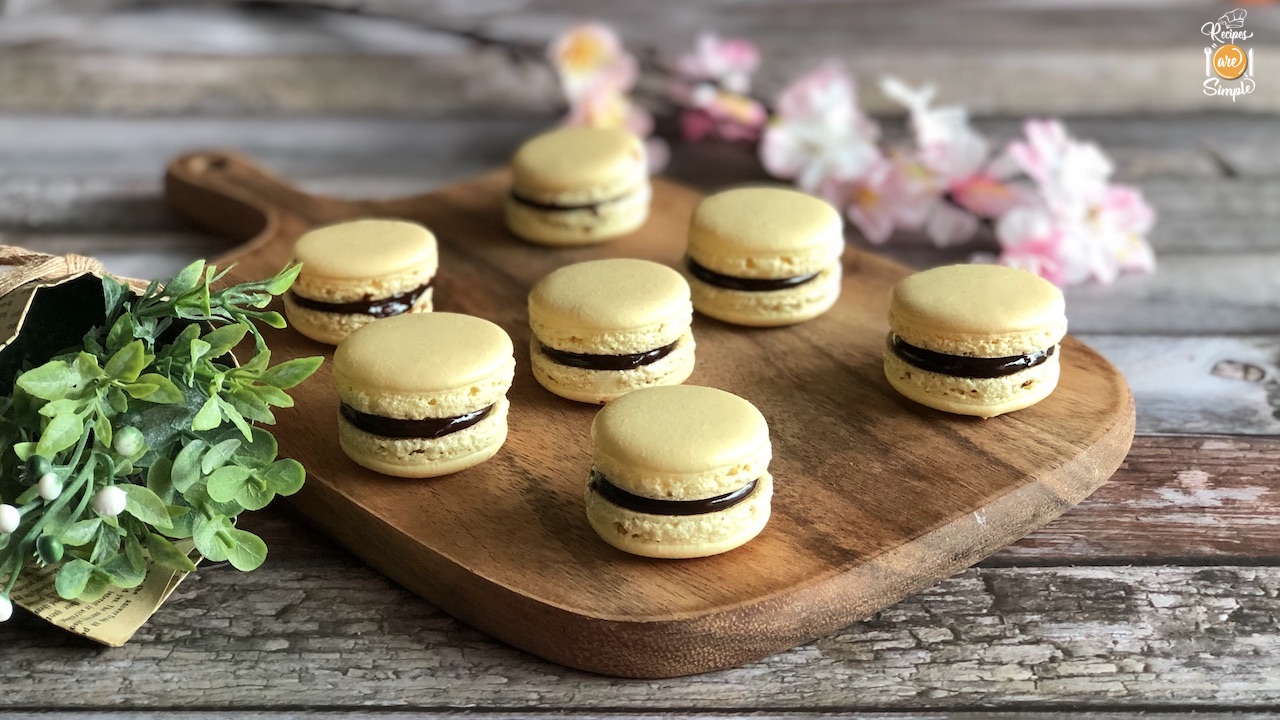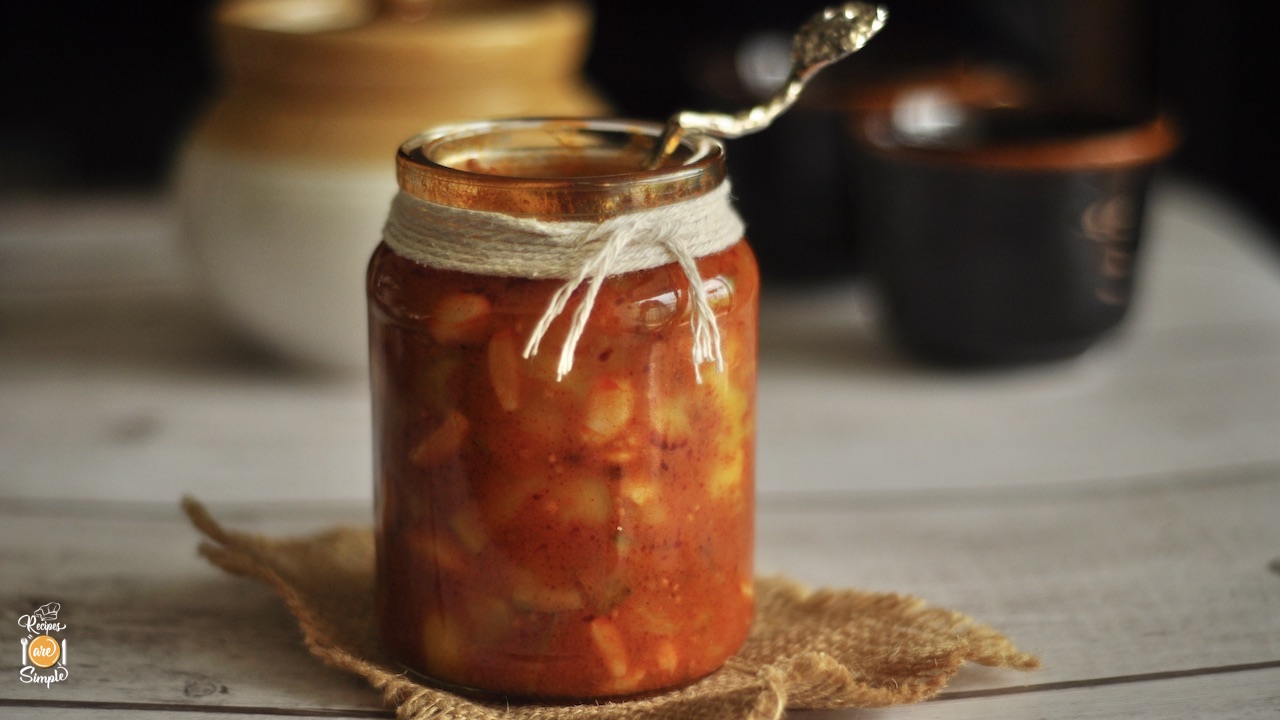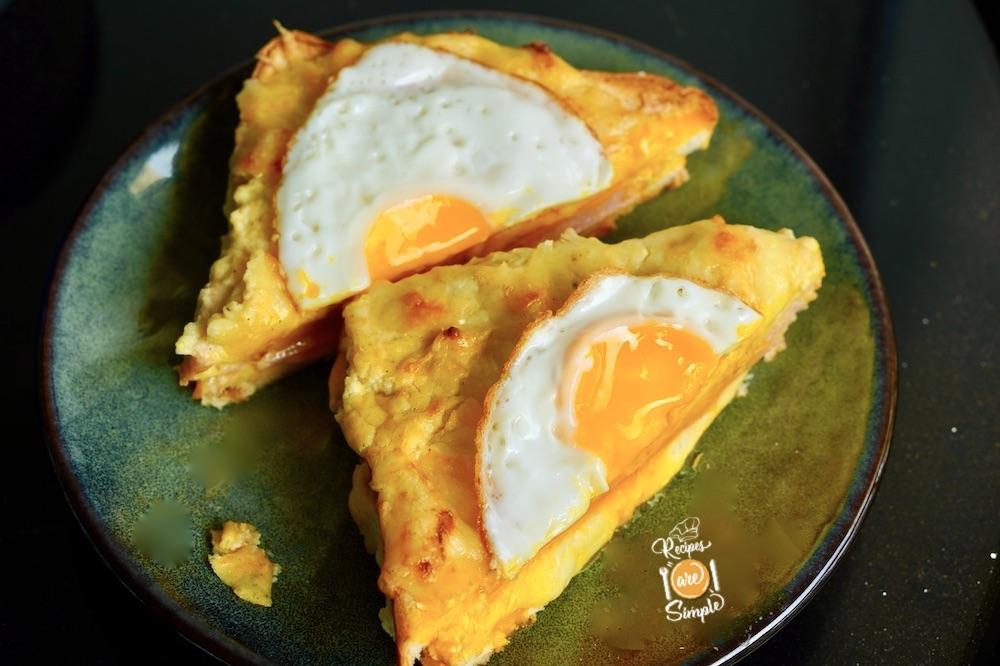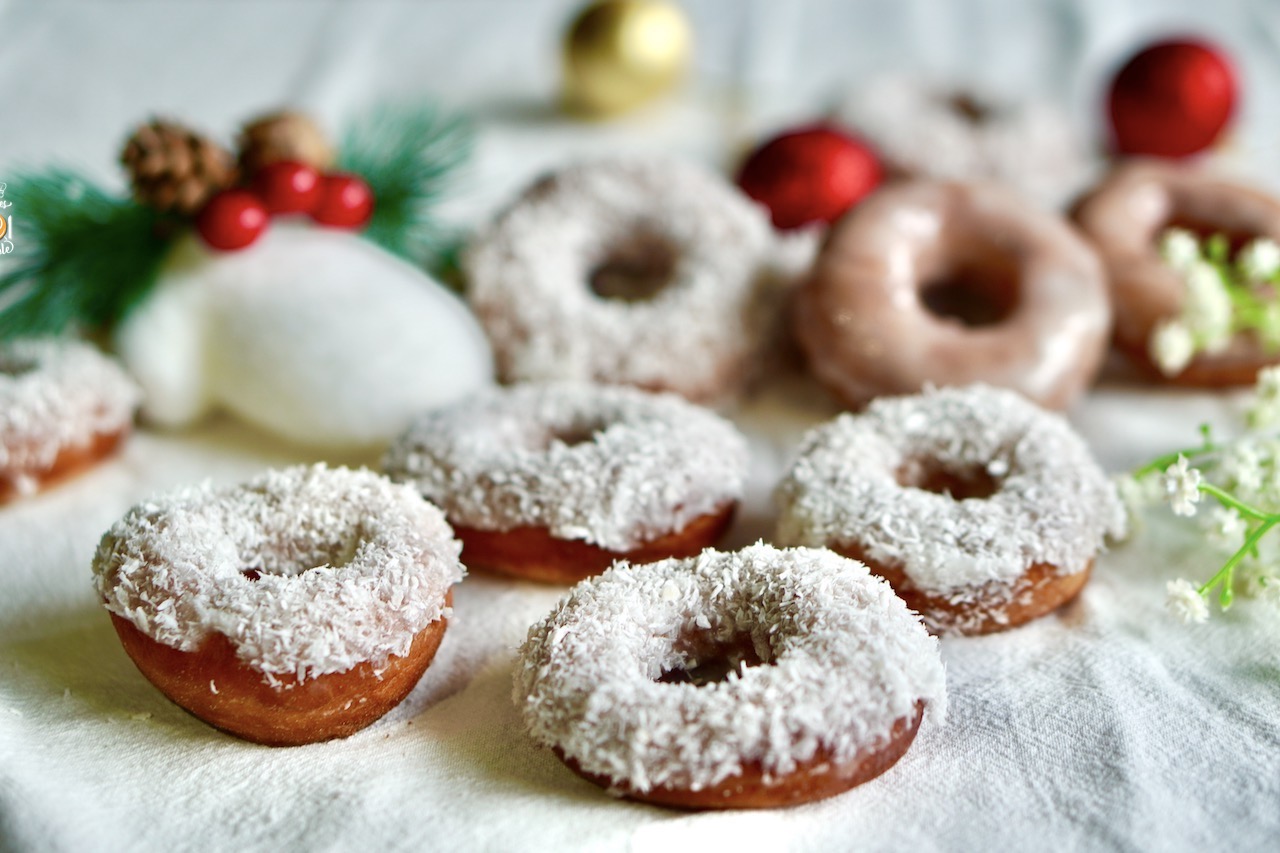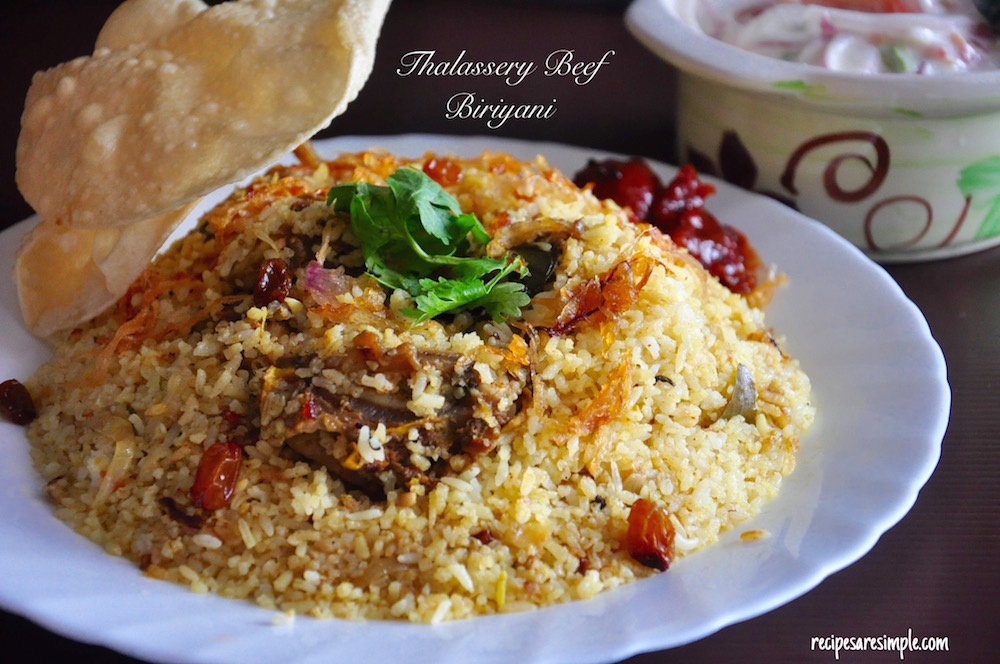Step by Step Guide to making Macarons
A Macaron is a sweet Meringue-based sandwich cookie made with egg white, icing sugar, granulated sugar, Finely ground almond powder and food coloring. The filling can be ganache, buttercream, or jam. This cookie is characterized by a smooth-finish top, hollow center, and a ruffled appearance above the flat base (also known as the ‘feet’). The texture can be described as slightly crispy on the surface and slightly chewy. Macarons come in a vast array of flavors!
I got a hands-on class in making Macarons from my friend Lynn, who makes them regularly.
In this post, I will share tips on getting the Macarons perfect, and even great on your very first attempt. Also provided is a template for piping the macarons and a recipe for Macarons with Chocolate Ganache filling.
Scroll down for the Complete Recipe.
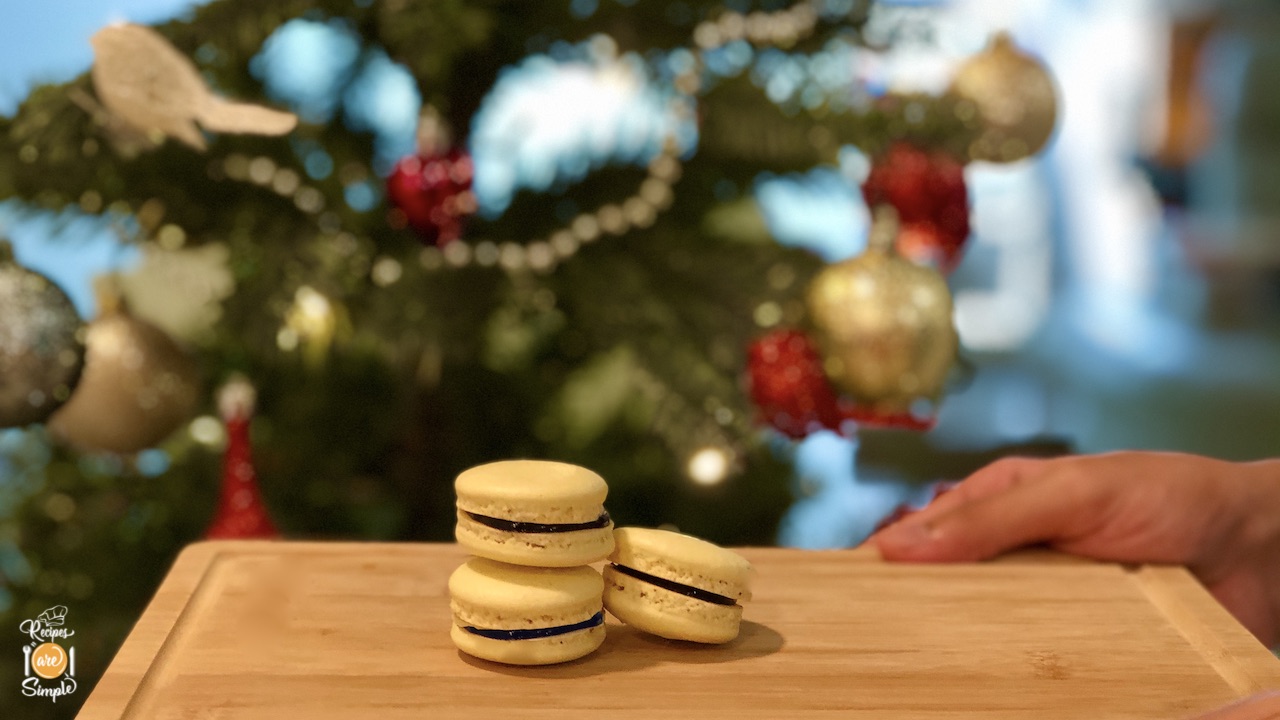
Step by Step Guide to making Macarons
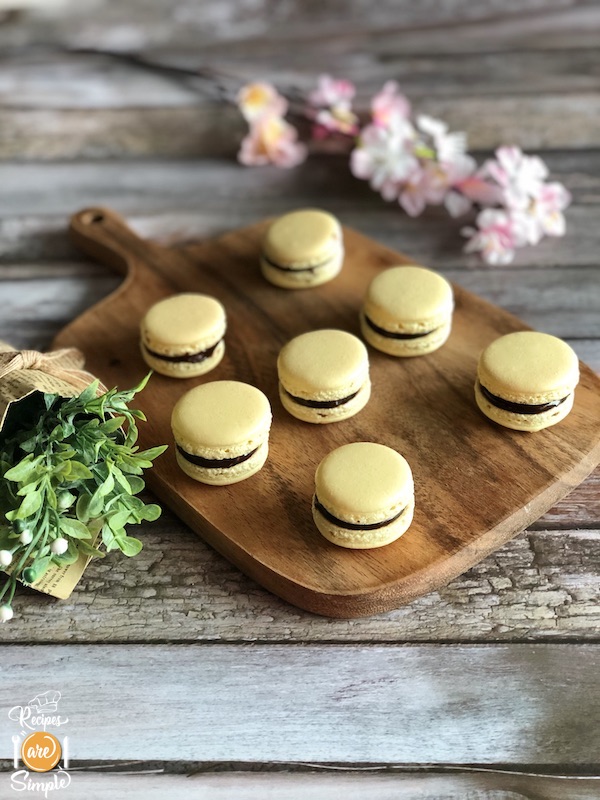
You are here: Quick Browse > Dessert Snacks > Step by Step Guide to making Macarons
|
Recipe Name: Step by Step Guide to making Macarons
Recipe Type: Confection/ Sweet / Dessert / French
Author: Shana @ RecipesareSimple
Prep time: 30 min
Cook time: 1-hour baking (3 batches)
Total time: 1 hour 30 min
Yield: (20 Macarons )
|
Watch the Video or click to read Complete Recipe – Below.

What is so special about Macarons?
Appearance! Macarons are ‘grade A’ in the visual appeal department. Not frumpy or low maintenance like regular cookies!
That smooth, satiny top, contrasted with the elegant frills on the bottom, doubled into an often colorful sandwich… yes a Macaron blends refinement and elegance!
Texture! Whereas most cookies are either this or that, ie: crispy crunchy, or chewy. Macarons offer a bit of both! The contrast is quite special! You enjoy the bite, going from crisp to chewy and then moist and melty. The combination intrigues the senses.
Taste: The fillings offer so many flavors. Contrasting flavors can be quite a complex and delicious experience! For example, orange or mint shells with chocolate ganache, or lemon shells with blueberry curd, or chocolate shells with salted caramel, etc. The flavors play off each other, and everyone has a favorite once they try. The taste is quite addictive! The shells are sweet, so dark chocolate, less sweetened fillings are also great!
Small with Impact! It really is amazing how a small cookie can have a huge and long-lasting impact. They leave an impression on you, no matter what!
Why are Macarons so expensive?
Macarons are more expensive than the average sweet confection or cookie due to the costly ingredients as well as the time and expertise involved in making them.
Almond flour is far more expensive than regular flour varieties. The fillings too can be pricey – either chocolate and they sometimes contain exotic ingredients. and egg whites are the two main ingredients that make up a macaron. In relation to other flours, almond flour is several times more expensive. As for eggs, they are used in a variety of other baked goods but being that eggs make up a big part of the macaron (the egg yolk is not used), the costs do add up. In addition, the filling sandwiched in between the macaron cookies requires other costly ingredients like chocolate and sometimes exotic flavorings.
What is Almond meal?
Almond meal is also known as almond flour or ground almond. It is made from ground almonds. Almond flour is usually made with blanched almonds, whereas almond meals can be made with whole or blanched almonds. The consistency is more like corn meal than wheat flour
What is the difference between Macarons and Macaroons?
The main ingredient is the biggest difference – which for macarons means, almond meal (ground almond), and macaroons is shredded coconut.
French Macarons are sweet ‘airy’ meringue-based, with a wide range of flavored fillings. Coconut Macaroons are made from shredded coconut, held together with egg whites and sugar. They have a crunchy, craggy outside texture and a chewy interior. They are often dipped in chocolate. Nuts, chocolate, or dried fruit may also be incorporated into the batter.
Macaronage:
French pâtisserie technique or ‘Macaronage’ meaning the process of incorporating the dry ingredients with the egg whites. It is a technique where the batter is worked until smooth, shiny, and flowing. The batter should fall back in figure-eight when it reaches optimum consistency.
Equipment and tool you will need:
- Kitchen Scale. To weigh out your ingredients.
- Large Sieve and Bowl. A fine mesh-sieve and large bowl are required to sift the ground almond and icing sugar together.
- Sterile Bowl for beating Egg whites. Using Stainless steel or Glass bowls is best. Wash and dry the bowl thoroughly before attempting to beat egg whites. Any trace of impurities from a previous mixing will interfere with getting stiff peaks. Stand mixers sometimes have plastic bowls. These are more likely to contain traces of remnants that have not come off during cleaning. I usually rinse my bowls by hand, then put them in the dishwasher, to get rid of any residue.
- Electric Mixer/ Eggbeater.
- Template. Printable template available below.
- Piping Bags and Round Nozzle(Wilton 10).
- Aluminum baking sheet(tray) – at least 2.
- Parchment Paper.
- Spatulas.
- Oven with wire rack.
- Timer.
Tips to make perfect macarons:
- Measure everything first. Use the Kitchen scale and weigh everything precisely. Place everything in clean and dry bowls before your start. Here you need.
- Finely Ground Almond/ almond meal. The best results come from using extra fine ground, Almond. Purchase extra-fine almond flour and then pulse a few times in a small processor to get it even more extra fine. Make sure your processor is absolutely dry. We use Blanched Ground Almonds here.
- Sifting the dry ingredients: We need to sift together the ground almond and icing sugar into a dry bowl. Do this two times, to make sure everything is mixed together and light. When the dry ingredients is added to the macaron batter, it is not mixed vigorously. Rather, it is folded in. So make sure the almond meal and icing sugar is mixed perfectly.
- Sterile bowls. No trace of grease or impurity when whipping egg whites. This will keep the egg whites from getting whipped stiffly.
- Egg whites. Egg whites must be measured accurately without any trace of yellow. If you have dropped some egg yolk in there, it is best to start again, or they will not get whipped properly. Eggs can not be added with0ut measuring. This is because the amount of liquid present in the egg white determines how dry or wet the batter will be.
- Aging Egg whites. French macarons are incredibly sensitive, especially moisture. This is why some recipes call for “aging egg whites” as when egg whites get old they lose some moisture. Although it is not a must to age the egg whites, doing so dehydrates them and reduces the moisture content as much as possible from the egg whites while keeping their protein bonds the same. The process is thought to increase the whites‘ elasticity, better for whipping, more stable meringue.
- Beating Egg Whites. The egg whites must be whipped till they achieve stiff peaks. However, overbeating them beyond that point will result in cracked macaron shells so when whipped to a stiff peak, but maintaining a glossy sheen, you must stop.
- Beating Speed.Always start at a low-medium speed initially and maintain this for the first 3 minutes. You must add the sugar during the first 1-2 minutes, in 3-4 batches. After that, you can beat on a medium-high speed till done.
- Adding Color. Color is added at the end of beating the egg whites or after the first folding in step, of the dry with wet ingredients. Gel or powder colors are preferred here, as liquid color can affect the batter’s consistency.
- Batter Consistency.The batter is not thin, neither too thick. It resembles a cake batter that falls off the spatula to form ribbons in the batter. Batter should be shiny.
- Template, Parchment, and Metal baking sheets. A template is best to keep the size of the macarons relatively uniform and to space them out. Print out the template below- 3 or four sheets. Keep some extra! Parchment paper is placed over the template(which is placed on the bottom side/inverted baking sheet/tray) and then piping done. The tray is inverted to keep the heat even on all sides. If you use the baking tray right side up, the heat radiating from the raised sides of the tray can cause the macarons along those sides to be more brown while baking.
- Piping Bags, Nozzles, Silicone mat. Piping bag or macaron piping tool. Another piping bag for the ganache. Use a tall cup to help fill the piping bags neatly without flowing out. A round (WILTON 10) piping nozzle is used. Silicon mats are available and they give you more perfectly shaped and evenly sized macarons, however sometimes people find that the macarons stick to them. However, I found that upon cooling, the macarons come off easily.
- Tapping to remove air. Tapping the tray from below, till all the bubbles are gone, gives you the perfect shell for the macaron. Small bubbles can also be poked and then tapped again but you must do all this before the ‘skin’ begins to develop. Failing to remove these air bubbles, can cause them to pop while baking, creating craters or lumpy macarons.
- Resting time. After the macarons have been piped and tapped of air bubbles, you need to rest them at room temperature to allow the ‘skin’ to form. This can be from 30 minutes- 2 hours. I have rested them only for 30 minutes, with fine results.
- Oven temperature: Follow recipes correctly. Each may require different oven temps, baking times, and resting times. Preheat the oven only 5 minutes before you begin. In this recipe, the baking time is 20 minutes.
- Almond meal. Although you can make the almond meal at home, by blanching, drying, and then grinding in a food processor, I prefer store-bought Almond meal. This is ground in a special mill, without releasing the oil of the almond. Oily almond meal can lead to flat macarons.
- Sugar. Macarons made with more powdered sugar (icing sugar) tend to have larger feet, a more delicate texture and seem to be less prone to air pockets. I recommend it.
How to make Macarons with Chocolate Ganache – Recipe at a glance:
- Age the egg whites, the day before.
- Sift almond meal (ground almond)with icing sugar.
- Whisk egg whites till stiff, adding the icing sugar.
- Fold the egg white into the flour mixture.
- Pipe the macarons. Remove air bubbles.
- Rest the piped macarons, till ‘skin’ forms.
- Bake one tray at a time.
- Cool completely on a baking tray.
- Prepare Ganache.
- Fill the macaron shells.
- Store chilled.
Ingredients:
- 98 gms Icing Sugar (powdered sugar) – to add to the almond meal
- 90 gms Fine blanched Almond powder(finely ground almond)
- 75 gms Egg white
- 98 gms Icing Sugar (powdered sugar) – to add to the egg white
- Food coloring, as needed
For the Chocolate Ganache Filling:
- 150 gms Dark chocolate (Couverture chocolate buttons or chopped block)
- 15 gms Unsalted Butter
- 50 gms Heavy cream
- 1/2 tsp Vanilla bean paste
- 1/8 tsp fine sea salt
Scroll down for the Complete Recipe.
Notes:
- Powdered sugar can be made by processing refined sugar in the food processor. Weigh after made into powder.
- Use a spatula to press on the thicker grains of ground almonds, while sifting to get everything through the sieve.
- Gel or powder colors are preferred here, as liquid color can affect the batter’s consistency.
- The egg whites must be whipped till they achieve stiff peaks. However, overbeating them beyond that point will result in cracked macaron shells so when whipped to a stiff peak, but maintaining a glossy sheen, you must stop.
- Egg whites must be measured accurately without any trace of yellow. If you have dropped some egg yolk in there, it is best to start again, or they will not get whipped properly. Eggs can not be added with0ut measuring. This is because the amount of liquid present in the egg white determines how dry or wet the batter will be.
- Stainless steel or glass bowls are preferred to whisking egg whites as they tend to be more sterile after cleaning.
- Try to keep the beater speed steady. Low-medium in the beginning and med-high towards the end, without changing and shifting in between to get a stable meringue.
- Over beating the egg white, can cause cracked macaron shells.
- French pâtisserie technique or ‘Macaronage’meaning the process of incorporating the dry ingredients with the egg whites. It is a technique where the batter is worked until smooth, shiny, and flowing. The batter should fall back in figure-eight when it reaches optimum consistency.
- The aluminum baking sheet/ tray is inverted to keep the heat even on all sides. If you use the baking tray right side up, the heat radiating from the raised sides of the tray can cause the macarons along those sides to be more brown while baking.
- TWO COLORS. If you want to add two colors for the macarons, divide the batter before adding color and before the macaronage step. While piping one colored batch make sure to cover the other bowl with saran wrap, to prevent premature skin from forming.
- The ruffled appearance above the flat base of the single macaron shell is known as the ‘feet’.
- You can use either cooking cream or whipping cream to make the ganache.
- Here is the Macaron template.
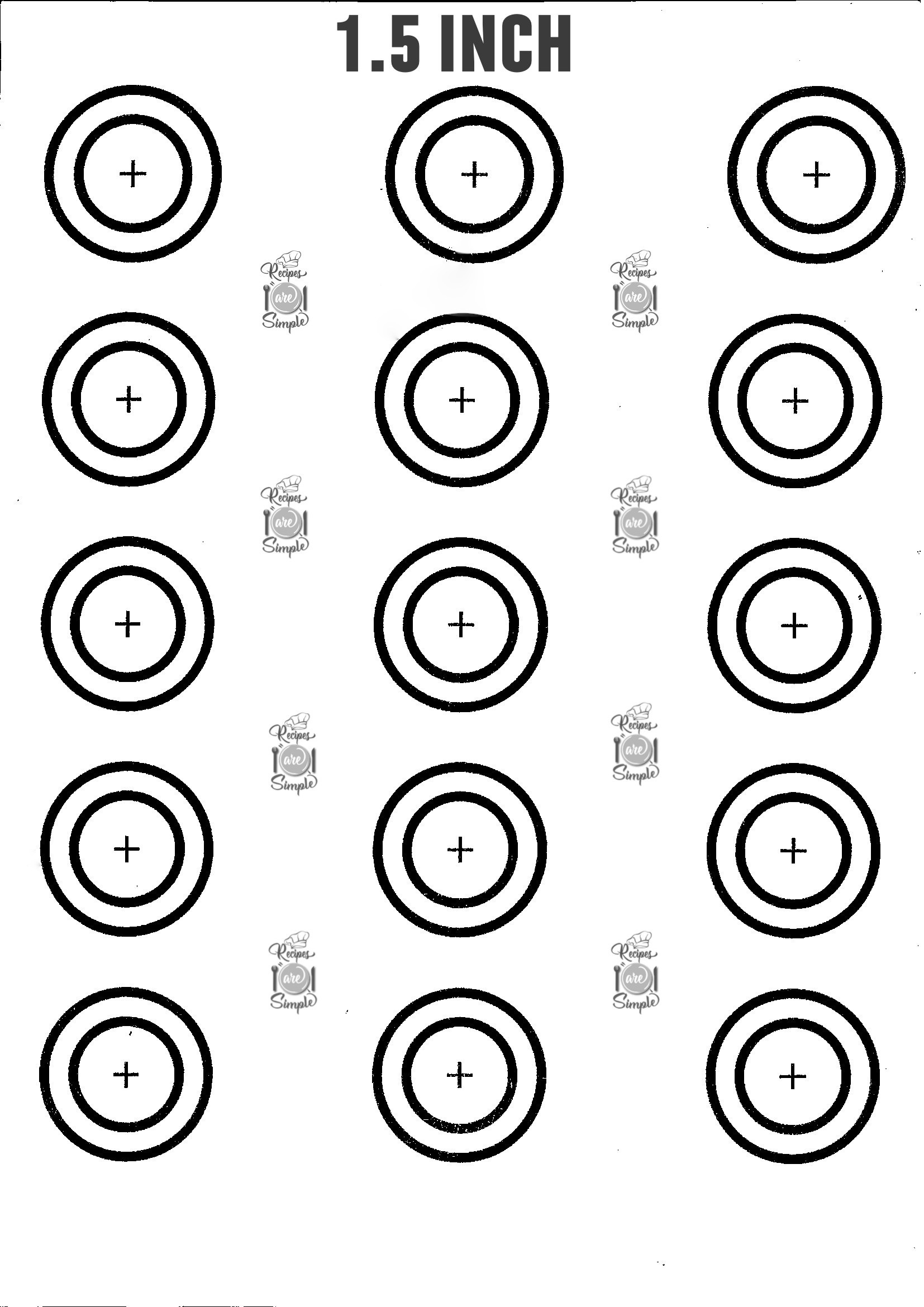
It is recommended that you open the recipe page and keep this page going if you like to WATCH / LISTEN to the video alongside the written instructions.
Key Ingredients: Ground Almond, Icing Sugar, Egg white, Chocolate, Cream, Butter, Vanilla, Salt.
EAT AND TELL!!! Let us know if you tried – Step by Step Guide to making Macarons
|
Mail me your pics and testimonials 🙂 – recipesaresimple@gmail.com Thank you! ♥ If you make the dish, and share to your social media please don’t forget to tag me @recipesaresimple and hashtag it #recipesaresimple on any platform. Thank you! ♥ Quick Browse to see All Recipes by Category. World Cuisines to browse Recipes by Regional Cuisine. ♥Thanks for visiting www.recipesaresimple.com |

